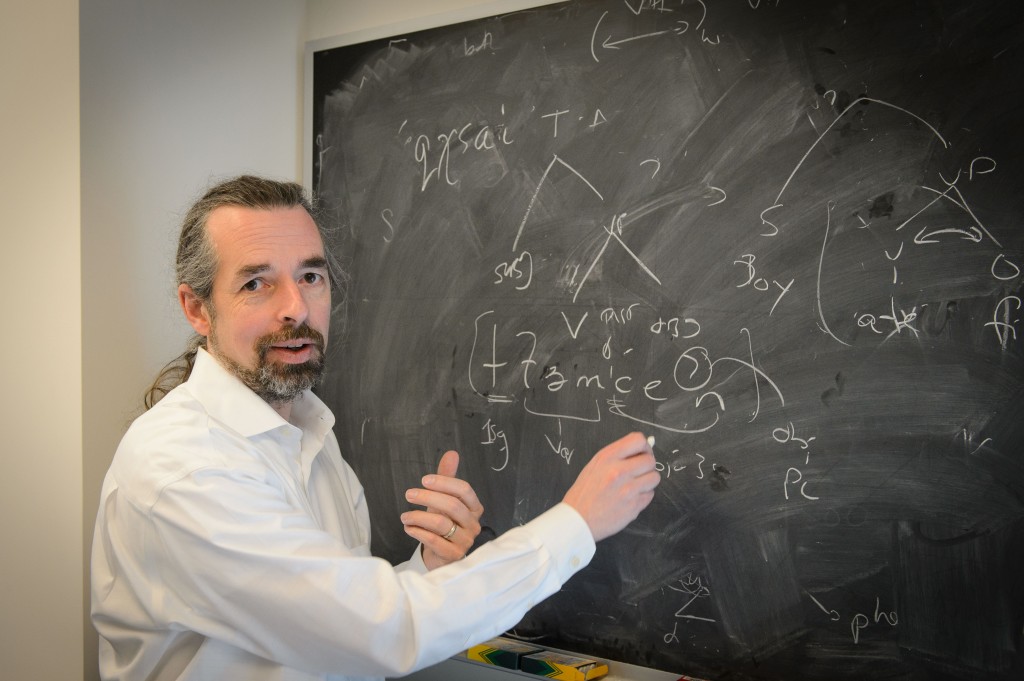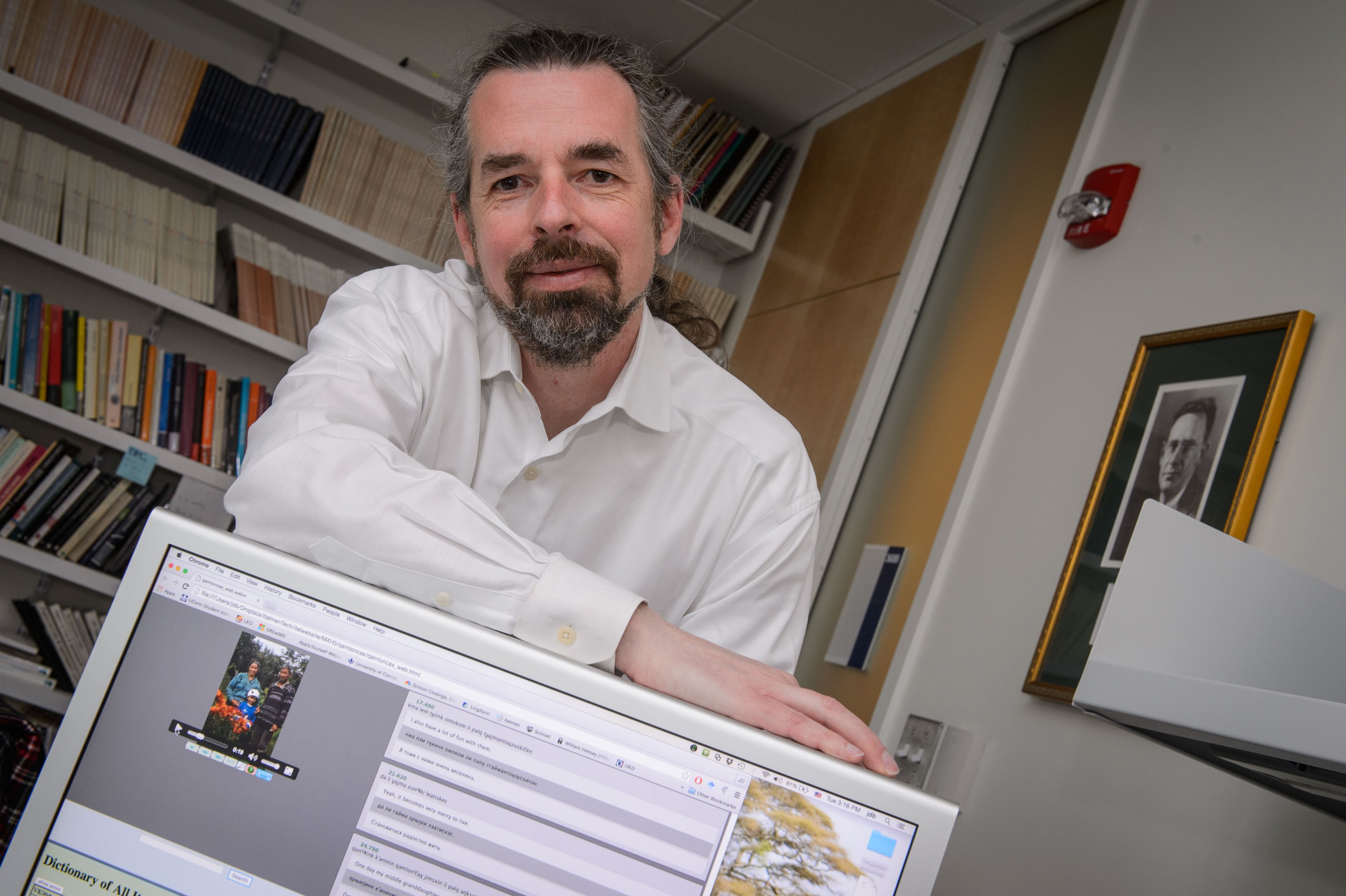Far in the northeast of Siberia, sandwiched between the Bering Sea to the east and the Sea of Okhotsk to the west, lies the Kamchatka peninsula: a mass of land similar in size and latitude to Great Britain, but subarctic in its climate, mountainous in its terrain, and isolated in its way of life.
Itelmen, a native language of this distant corner of Russia, is on the verge of extinction. In 1991, it had 100 native speakers, and in 2008 about 40. Now there are only five.
It’s not just that it’s a cultural loss to see a language like Itelmen go, says Jonathan Bobaljik, professor and head of the Department of Linguistics in the College of Liberal Arts and Sciences. There’s also a wealth of information about the underpinnings of human language to be found within it.
“From a linguist’s perspective, Itelmen happens to have a system that doesn’t look like anything else we’ve seen,” he says. “We can learn really interesting things about language from these languages, from the remote corners of the globe, that are lesser-studied.”
What’s really exciting is when the change we make to accommodate new observations from lesser-known languages generate surprising new predictions about familiar languages. — Jonathan Bobaljik
Bobaljik has been studying this critically endangered language for 20 years. His work to understand and document Itelmen, and his efforts to use it to further the understanding of language as a whole, have earned him a 2016 Guggenheim Fellowship from the John Simon Guggenheim Foundation.
The fellowship is one of the highest national honors available to scholars, and is awarded in recognition of exceptional capacity for productive scholarship and creativity. The award will help Bobaljik further a universal theory of language, one of the central questions in the field.
“It seems like the machinery that’s running underneath all the world’s languages is very similar,” he says. “You can look at all these thousands of languages that on the surface look very different. But, at a slight level of abstraction, they are in many ways all the same.”
The understudies
Roughly 50 percent of the world’s people speak one of only 15 languages. Mandarin Chinese, Spanish, English, Hindi, and Arabic are the top five. But with more than 7,000 languages spoken in the world today, Bobaljik says, that leaves a lot about which very little is known.
A main question that interests linguists is trying to formalize the systems that govern languages, with the goal of combining them into a universal theory that can explain how all the world’s languages work. As a relatively young scientific field – by some accounts, just over 50 years old as a formalized science – it has focused mostly on Indo-European languages and a handful of other widely spoken ones, such as Chinese and Japanese.
With so much data on these major languages, it’s easy to use them as a basis for a formalized theory. But leaving out so many other languages makes the theory incomplete, says Bobaljik.
In recent years, more and more indigenous languages like Itelmen are being studied, he says.
“Large chunks of the linguistics field are looking at a wider variety of languages: more indigenous languages, more languages outside what we’ve traditionally studied,” he says. “We’re now at a point where we’re expanding the empirical base of the field and can ask more detailed questions.”
A universal grammar
Bobaljik’s 2012 book, Universals in Comparative Morphology, used data from more than 300 languages to create a formal generative typology, or map of the different types of languages, and postulates several rules about their structure that seem to be universal.
For example, in English, the comparison of ‘good’ is irregular: we say “good,” “better,” and “best” instead of “good,” “gooder,” and “goodest.” Instead of accepting these examples as unexplainable quirks, linguists think there are overarching rules that may explain even these irregular patterns, and even limit the ways in which a pattern can be irregular.

In his new project, Bobaljik will continue his search for these universals by looking at agreement systems, or how the different words in a sentence agree with one another.
In English, for example, a verb must change its form to agree with a subject: we would say “I go” and “she goes.” But in about half of the world’s languages – many of which are rare and under-studied – many more of the words in a sentence must agree with each other. Itelmen is one of these languages, and will make a great starting point for comparison, he says.
“You can start with a small set of data and make predictions about languages we haven’t previously studied,” he says.
“We find that some of our predictions are wrong, and science moves forward by revising our theories to accommodate these new observations,” he continues. “What’s really exciting is when the change we make to accommodate new observations from lesser-known languages generate surprising new predictions about familiar languages. We can look at these results and say wow, we’ve learned something about these languages from questions we never thought to ask.”
Bobaljik thinks that the addition of more languages to the theory will certainly make the theory more complete. But he also has confidence in the foundation the field of linguistics has already built.
And he hopes his other work, including video and audio documentation projects of Itelmen, will give its heritage speakers, the children and grandchildren of the last generation of native speakers, a culture they can remember.
“If we can show that the kinds of postulates we have, based on Indo-European languages, need only a little bit of tweaking to extend them to unrelated languages of the globe, then we will know it’s a robust theory,” he says. “And Kamchatka is one of the farthest corners of the globe.”



